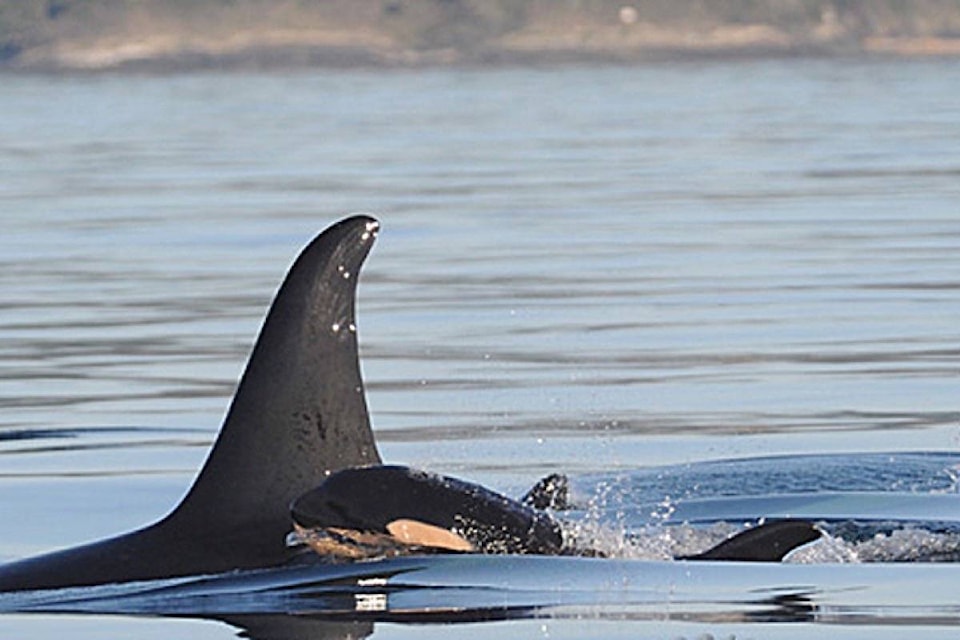Premier John Horgan says it over and over. He keeps staging media events with Washington Gov. Jay Inslee because they share concern about southern resident killer whales, and the threat posed by additional oil tanker traffic in the Salish Sea.

That’s why they teamed up to oppose the twinning of a 65-year-old pipeline that carries Alberta crude to southwestern B.C.’s last remaining refinery in Burnaby and to Washington’s much larger refineries. One of those, the Phillips 66 refinery at Cherry Point, was built in 1954 specifically because the Trans Mountain pipeline was completed that year.
By the 1970s, crude from Alaska’s North Slope and the adjacent Arctic Ocean was heading down the B.C. coast in tankers, to refineries at Cherry Point, Anacortes and on to California. Now, more than one Alaska tanker a day sails past Victoria, but it’s not enough to supply Washington’s demand, with Trans Mountain still the only oil pipeline in the state.
Shale oil from North Dakota and additional oilsands crude from Alberta are coming by rail in record amounts, and even the occasional Russian tanker has been seen docking in Washington.
The Horgan-Inslee show plays to downtown Vancouver and Seattle media, conditioned for years by covering professionally staged protests. The propaganda message is that one extra tanker a day from Burnaby would be it for southern resident orcas.
READ MORE: Inslee lowers pressure on Trans Mountain opposition
READ MORE: Trans Mountain approved for second time, new conditions
If you still believe that, I have news for you. That one tanker represents about a five per cent increase in shipping traffic from Vancouver harbour, and much less for the whole region. It’s nothing like the “seven-fold increase” that B.C. Environment Minister George Heyman and his former employer the Sierra Club keep claiming.
A study published last fall in the scientific journal Nature examines the threats to southern resident orcas from three sources: shipping, abundance of salmon and PCB contamination. Tankers are a tiny fraction of the shipping that deters orcas from feeding grounds. Ferries are a much greater problem on both sides of the border.
In February, the B.C. government quietly announced it is restoring 2,700 B.C. Ferries sailings that were eliminated in 2014, making a total of about 120,000 per year. Some of these off-peak sailings ran at less than five per cent capacity, the crew outnumbering the passengers. Two of the routes serve Quadra Island, home of Transportation Minister Claire Trevena. The massive taxpayer subsidy to B.C. Ferries is being increased to pay for these nearly empty sailings.
Back to southern resident orcas, among the most studied marine creatures in the world. Since 1972, the population of this tiny sub-group has fluctuated from 70 to 99 animals. As of 2017 it was 76, which is why the Nature study examined inbreeding as a factor in calf survival.
Last summer an orca calf died and its mother carried it for days. Serious biologists described an instinctive effort to help calves breathe on their own, but the media story quickly became that the whale was “grieving.”
It’s similar to fake news stories about disappearing polar bears. Those have faded away after the world-wide misrepresentation of pictures of a dying bear, and subsequent accurate reports of northern communities overrun by polar bears.
Another study of marine life and shipping came out a couple of weeks ago. The National Energy Board approved the Trans Mountain expansion for a second time, recommending efforts to reduce the impact of all shipping on whales, including ferries and whale watching vessels.
Tom Fletcher is B.C. legislature reporter and columnist for Black Press Media. Email: tfletcher@blackpress.ca
@tomfletcherbc
tfletcher@blackpress.ca
Like us on Facebook and follow us on Twitter.



